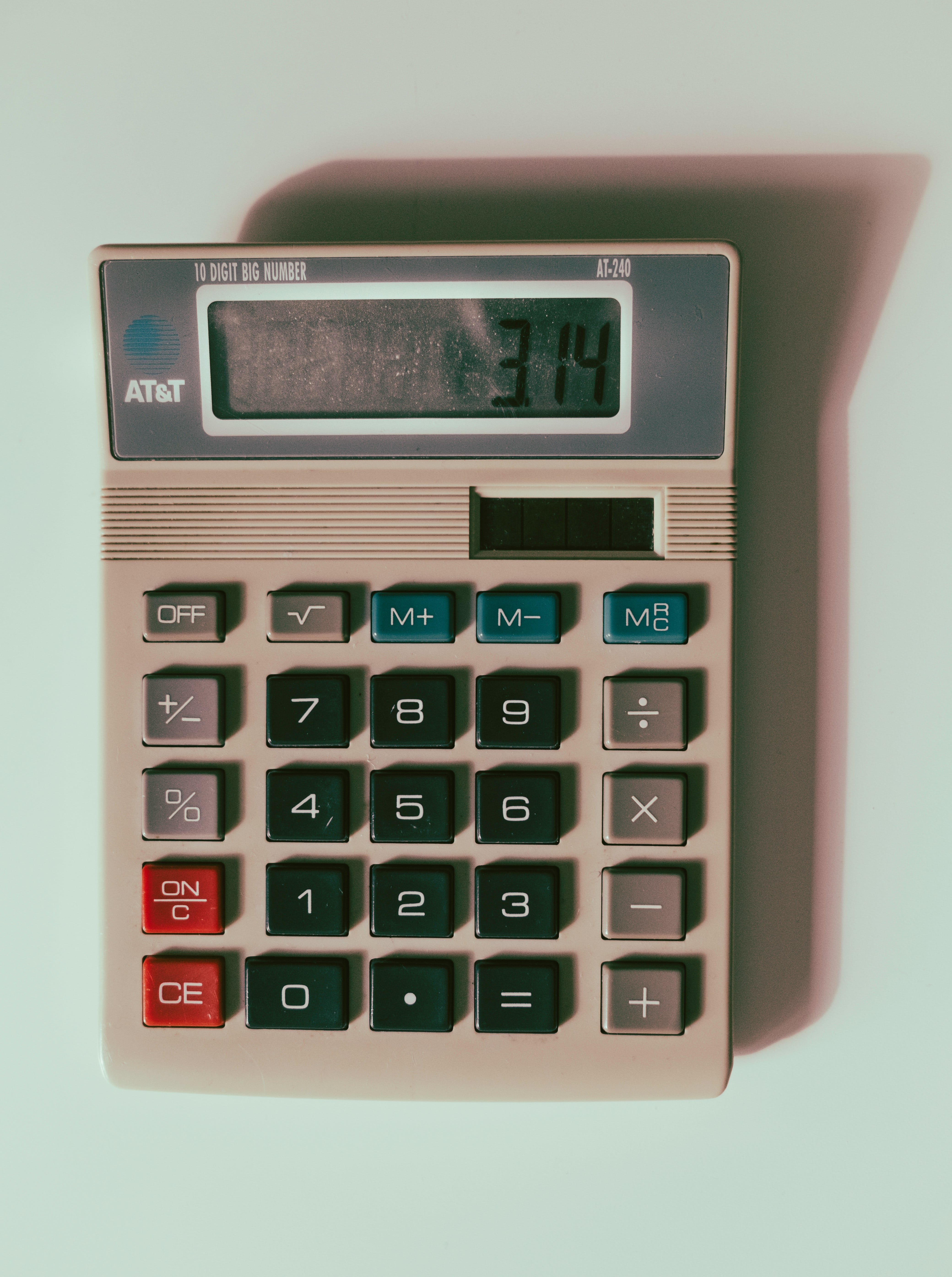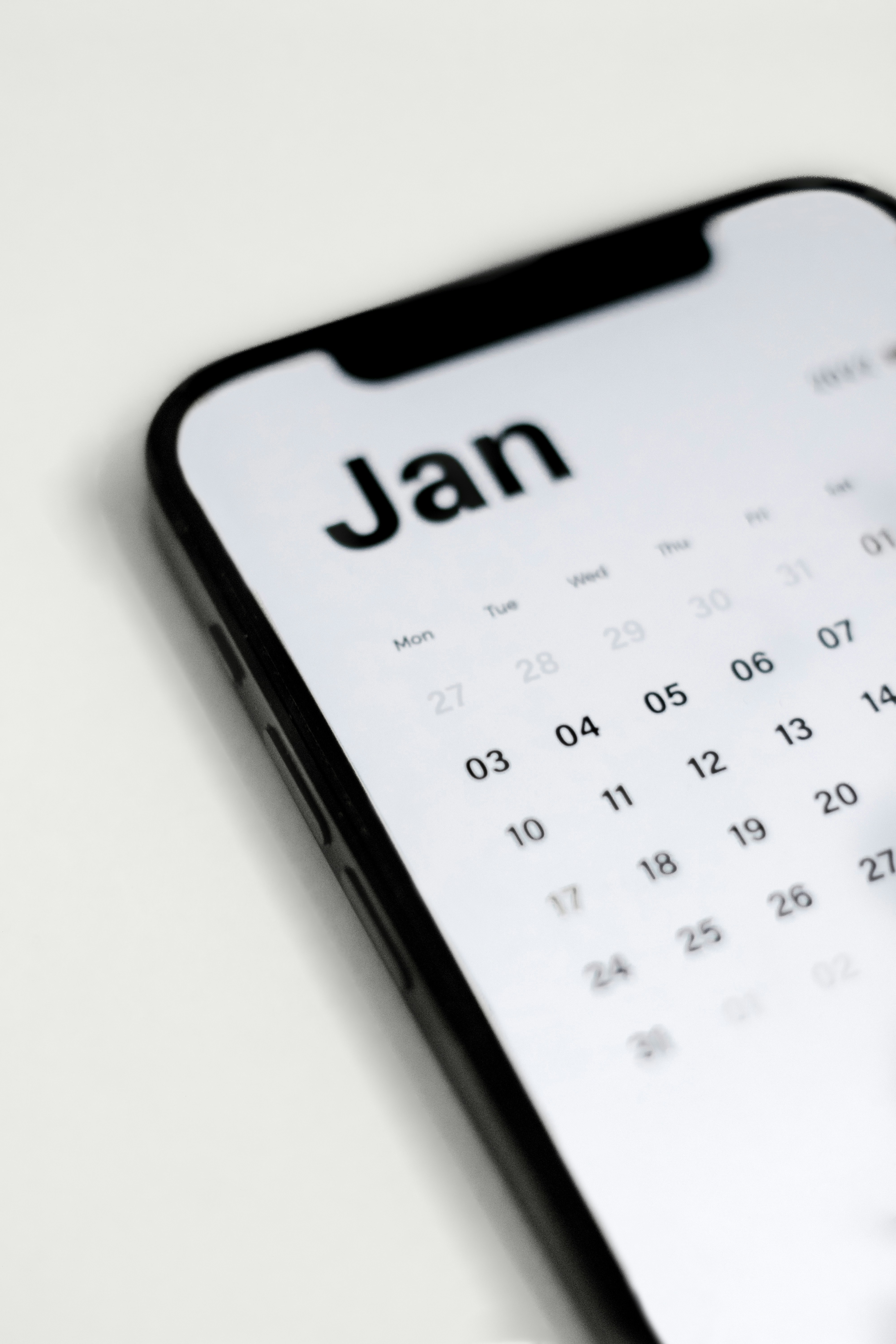Ongoing Home Costs: A Complete Guide for Homeowners
Owning a home provides great benefits, but it also brings recurring expenses that homeowners must plan for. Beyond the initial purchase, there are various ongoing costs that require careful budgeting to ensure your home remains a comfortable and secure space. Understanding these expenses is key to managing your finances effectively.
Here's a breakdown of the ongoing home costs homeowners need to be aware of:
Use our quick navigation guide below to jump to any point of our blog on The Financial Side of Homeownership: Ongoing Costs: 
- Property Taxes: Annual Property Taxes
- Homeowners Insurance
- Utilities: Monthly Utility Bills
- How Inflation Affects Home Costs
- Areas Where Inflation Impacts Home Costs
- Preparing for Inflation’s Impact on Home Costs
- Maintenance and Repairs
- The Long-Term Cost of Deferred Maintenance
- Why Regular Maintenance Is Crucial
- Examples of Deferred Maintenance Costs
- Homeowners Association (HOA)
- How to Save on HOA Fees
- Tips for Managing and Saving on HOA Fees
- Lawn Care and Landscaping
- Benefits of Regular Home Inspections
- Why Regular Inspections Are Important
- When to Schedule an Inspection
- Benefits of Bundling Insurance Policies
- Why You Should Bundle Insurance Policies
- Example of Savings Through Bundling
- Miscellaneous Costs
- Next Steps for Managing Ongoing Home Costs
Property Taxes: Annual Property Taxes
Property taxes are a yearly expense based on the value of your home, and these taxes can vary depending on your location and the value of your property. In Calgary, property taxes are calculated using a municipal tax rate applied to the assessed value of your home. The tax rates can change annually, so it’s important to keep track of any updates.
- Tip: Calgary’s TIPP (Tax Installment Payment Plan) is the city's most popular property tax payment method. With TIPP, instead of making one large payment in June, you pay smaller monthly installments. The amount of each installment is equal to your annual property tax bill, and payments are automatically withdrawn from your bank account on the first day of each month. This method makes budgeting easier by spreading the cost of property taxes over the year and reduces the risk of late payments.
Homeowners Insurance: Protect Your Investment
Homeowners insurance is essential for protecting your property and personal belongings from damage caused by unforeseen events such as fires, theft, or natural disasters. Without insurance, you risk significant financial loss if disaster strikes.
- Tip: Review your homeowners insurance policy regularly to ensure it provides adequate coverage for your property. Premiums vary depending on factors such as the home’s value and location, but on average, homeowners insurance can cost anywhere from $500 to $1,500 annually.
Utilities: Monthly Utility Bills
Utility costs—such as electricity, water, gas, and sewage—are another ongoing expense for homeowners. These costs can fluctuate depending on the size of your home and seasonal changes in energy usage.
- Tip: Utility costs in Calgary can range between $200 and $500 per month, depending on your home size and usage. Keep track of your energy consumption to better plan for high and low-usage months, especially with heating in winter and cooling in summer.
How Inflation Affects Home Costs
Inflation can have a significant impact on the ongoing costs of homeownership. As the price of goods and services rises, homeowners may find that their regular expenses increase, too. From property taxes to home maintenance, understanding how inflation affects your home’s costs can help you better prepare for the future.
Areas Where Inflation Impacts Home Costs
-
Property Taxes: Inflation can drive up the assessed value of your home, leading to higher property taxes. As the market value of homes increases due to inflation, local governments may adjust their tax rates or re-assess properties, resulting in higher tax bills.

-
While property tax increases are typically capped, they can still rise significantly over time.
-
Maintenance and Repairs: The costs associated with maintaining and repairing your home can rise due to inflation. The price of labor, materials, and equipment can increase as inflation drives up wages and production costs. This can make routine home maintenance, such as landscaping, plumbing, and HVAC servicing, more expensive.
-
Utility Bills: Inflation can also affect the cost of utilities. As the cost of energy, water, and other essential services rises, your utility bills may follow suit. Rising gas prices, for instance, can lead to higher heating costs during the winter months, and increases in electricity prices can result in higher energy bills year-round.
-
Home Improvements and Renovations: If you’re planning to renovate or upgrade your home, inflation can increase the cost of materials and labor. Construction materials like lumber, steel, and even paint can see price hikes, and contractors may increase their fees as wages rise. For larger projects, such as remodeling or additions, inflation can substantially affect the overall budget.
Preparing for Inflation’s Impact on Home Costs
-
Budget for Increased Expenses: Be proactive in adjusting your budget to account for rising costs. When calculating monthly expenses, include a cushion for increases in property taxes, utilities, and maintenance costs. Reviewing your budget regularly and making adjustments can help you avoid surprises and ensure you’re financially prepared for inflationary pressures.
-
Plan for Long-Term Costs: Inflation tends to compound over time, so it’s important to think long-term. Factor in potential cost increases when planning for future repairs or upgrades. By anticipating higher costs for goods and services, you’ll be better positioned to manage your home’s financial needs in the coming years.
- Tip: Keep in mind that costs for goods and services like lawn care, repairs, and utility bills may increase over time due to inflation. Factor this into your budget when planning for the future. This will help you prepare for the inevitable rise in costs and ensure that your homeownership experience remains financially sustainable.
By understanding the effects of inflation on your homeownership expenses, you can make informed decisions and adjust your finances accordingly. Planning for these rising costs will allow you to maintain a comfortable and financially secure home in the long run.
Maintenance and Repairs: Keep Your Home in Top Shape
Maintaining your home and addressing unexpected repairs are part of homeownership. Regular upkeep, such as servicing HVAC systems or cleaning gutters, is essential to keep your home in good condition. Additionally, be prepared for emergency repairs, such as fixing a leaky roof or plumbing issues.
- Tip: Set aside about 1% of your home’s value annually for maintenance and repairs. For example, if your home is valued at $300,000, aim to budget $3,000 per year for upkeep. Regular maintenance, like HVAC servicing and appliance checks, can prevent costly emergency repairs.
The Long-Term Cost of Deferred Maintenance
One of the most important aspects of homeownership is staying on top of routine maintenance. Neglecting small issues may seem harmless at first, but over time, deferred maintenance can lead to significantly higher repair costs. By addressing minor problems early, you can prevent them from snowballing into expensive, more complex issues that could have been avoided with timely attention.
Why Regular Maintenance Is Crucial

-
Cost of Delayed Repairs: The longer maintenance is deferred, the more expensive the eventual repairs become. Routine tasks like HVAC servicing, gutter cleaning, and plumbing inspections can prevent problems from escalating, but delaying them can lead to serious and expensive issues. For instance, failing to clean your gutters regularly could lead to water damage in your foundation or attic, both of which would be costly to repair.
-
Increased Energy Costs: Not maintaining your home’s insulation, windows, or appliances can lead to higher energy costs. A poorly maintained heating system or air conditioner can lose efficiency over time, forcing you to spend more on energy to keep your home comfortable. Simple maintenance tasks, like cleaning filters or resealing windows, can help maintain energy efficiency and lower your long-term utility bills.
- Small Issues Become Big Problems: A small leak, crack, or wear-and-tear issue that seems insignificant today can grow into a major problem over time. For example, a leaky roof might only cost a few hundred dollars to repair now, but if left unchecked, the water damage could spread to the home’s structure, leading to thousands of dollars in repair costs.
Examples of Deferred Maintenance Costs
-
Roof Repairs: A small leak in the roof may be easy to fix for a few hundred dollars, but ignoring it can lead to water damage in your home’s walls, ceilings, and floors, resulting in thousands of dollars in repairs.
-
Plumbing Issues: A small plumbing leak may cause minor inconvenience, but if left unchecked, it can lead to extensive water damage and mold growth, which may require costly professional remediation and repairs.
-
HVAC System: A neglected HVAC system that is not cleaned or serviced regularly can lose efficiency, causing it to overwork and increasing the likelihood of breakdowns. Eventually, you may face expensive repairs or need to replace the entire system.
- Tip: A leaky roof might cost a few hundred dollars to repair now, but if left unchecked, it could lead to costly structural damage down the line. Staying on top of minor maintenance tasks helps you avoid escalating costs and keeps your home in optimal condition.
By committing to regular maintenance, you can keep your home safe, efficient, and cost-effective over the long term. Proactively addressing small issues before they become major problems is key to saving money and preserving the value of your property.
Homeowners Association (HOA) Fees: HOA Dues (If Applicable)
If your home is part of a community governed by a homeowners association (HOA), you’ll need to pay HOA fees. These fees go toward maintaining shared amenities such as parks, community centers, and pools, as well as services like security and trash collection.
Typically, condos and townhomes are the most common properties that are part of HOA-managed communities. These fees are typically higher for condos, as they cover not only shared community spaces but also the building’s exterior maintenance and other common areas. Single-family homes in HOA neighborhoods may also have fees, but they are generally lower and cover fewer shared amenities.
- Tip: HOA fees can vary greatly depending on the amenities provided by the association. Some communities may charge a few hundred dollars annually, while others may have monthly fees that range from $100 to $1,000 or more. Be sure to account for these fees when planning your homeownership budget, especially when purchasing a condo or townhome where the fees tend to be higher.
How to Save on HOA Fees
Homeowners Associations (HOAs) are common in many communities, particularly in condos, townhomes, and some single-family neighborhoods. While HOA fees often cover important services like landscaping, security, and maintenance of shared amenities, these fees can sometimes feel like an additional financial burden. However, there are several ways you can save on or manage your HOA fees more effectively.
Tips for Managing and Saving on HOA Fees
-
Get Involved in the HOA Board: One of the most effective ways to influence the fees you pay is to get involved in the decision-making process. By becoming a member of the HOA board or attending board meetings, you can help

-
steer decisions on community
expenditures, maintenance, and improvements. Your involvement can help ensure that costs are kept reasonable and that the community’s needs are addressed efficiently. -
Review the HOA’s Financials: Many HOA fees are based on the community’s financial needs. Review the HOA’s budget and financial statements, which are often available to homeowners. Look for opportunities to reduce expenses or adjust budget allocations. For example, you might find that some costs are excessive or that there are opportunities to negotiate contracts with service providers for better rates.
-
Shop Around for Service Providers: If your HOA handles its own landscaping, cleaning, or maintenance, there may be room for negotiation on service contracts. Get quotes from other providers to compare prices and help your HOA find more affordable options for services like lawn care or cleaning.
-
Understand What the Fees Cover: Make sure you are clear on what your HOA fees include. Sometimes, fees can include services or amenities that are not essential for your needs. If this is the case, discuss with your HOA board whether it's possible to reduce or remove certain services to lower your fee.
-
Encourage Energy Efficiency Initiatives: Some HOAs offer discounts or lower fees if the community adopts energy-efficient practices. This can include initiatives like using LED lights for community areas, installing energy-efficient systems, or reducing water usage. Such steps can lead to long-term savings that could lower HOA fees in the future.
- Tip: Get involved in the HOA board to help influence decisions on community expenditures or maintenance services that could reduce your fees. Being proactive in your HOA community can help ensure that the association is run efficiently and that fees remain manageable for all homeowners.
By understanding how HOA fees are structured and taking steps to reduce unnecessary expenses, you can save money and ensure that your fees are spent efficiently on essential community services.
Lawn Care and Landscaping: Maintain Your Outdoor Spaces
Lawn care and landscaping are additional ongoing costs homeowners need to consider, whether hiring a professional service or handling the maintenance yourself. Well-maintained outdoor spaces contribute to curb appeal and property value.
- Tip: Professional lawn care services can range from $50 to $200 per month, depending on your yard’s size and complexity. If you choose DIY, budget for equipment such as mowers, trimmers, and fertilizers. Regular yard maintenance ensures a beautiful and functional outdoor space.
Homeownership often brings unexpected costs. Miscellaneous expenses such as pest control, cleaning supplies, and potential home upgrades or renovations should be factored into your budget.
- Tip: It’s important to allocate funds for these smaller but essential services. For example, pest control might cost $100 to $300 per year, and any future home renovations should be planned well in advance to avoid surprises.
Next Steps for Managing Ongoing Home Costs
To effectively manage the ongoing costs of homeownership, follow these steps:
-
Estimate Ongoing Costs
Review the various cost categories outlined above and estimate how much you’ll spend on each category monthly and annually. This will help you create a realistic budget for homeownership. -
Incorporate These Costs into Your Budget
Make sure these ongoing expenses are included in your home-buying budget. Tracking your spending is important for avoiding financial stress, and tools like budgeting apps can help you stay organized. -
Plan for Contingencies
Homeownership can bring unexpected expenses. It’s wise to have an emergency fund for sudden repairs or other unanticipated costs. Consider saving 3-6 months’ worth of living expenses as a cushion for such emergencies.
Ready to Manage Your Home Costs?
Homeownership comes with a variety of ongoing costs, from property taxes and insurance to utilities and maintenance. By budgeting for these expenses and utilizing payment methods like Calgary’s TIPP, you can better manage your finances and enjoy the benefits of owning your home. Being proactive about your ongoing home costs will provide peace of mind and help you stay on top of your financial responsibilities.
About the Author
Whether it’s inflation, deferred maintenance, or HOA fees creeping up, managing ongoing home costs is part of the real deal in real estate—and that’s where I come in. I help homeowners not only buy smart but stay smart when it comes to the long-term expenses that come with homeownership in Calgary and beyond.

Dusko Sremac – Calgary REALTOR®
I’ve helped over 1,500 families not just buy homes—but build budgets, understand real costs, and avoid common financial pitfalls. My job isn’t just to get you the keys—it’s to help you plan for what comes after, too. If you’re navigating the numbers of homeownership, I’m here to help.
Cell: 403-988-0033 | Email: dusko@repyyc.com



Leave A Comment